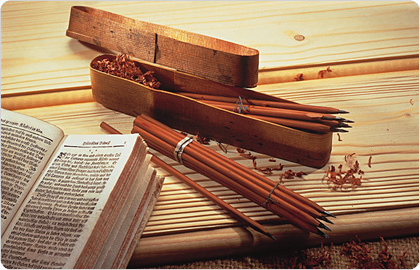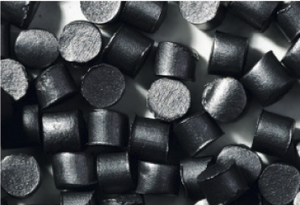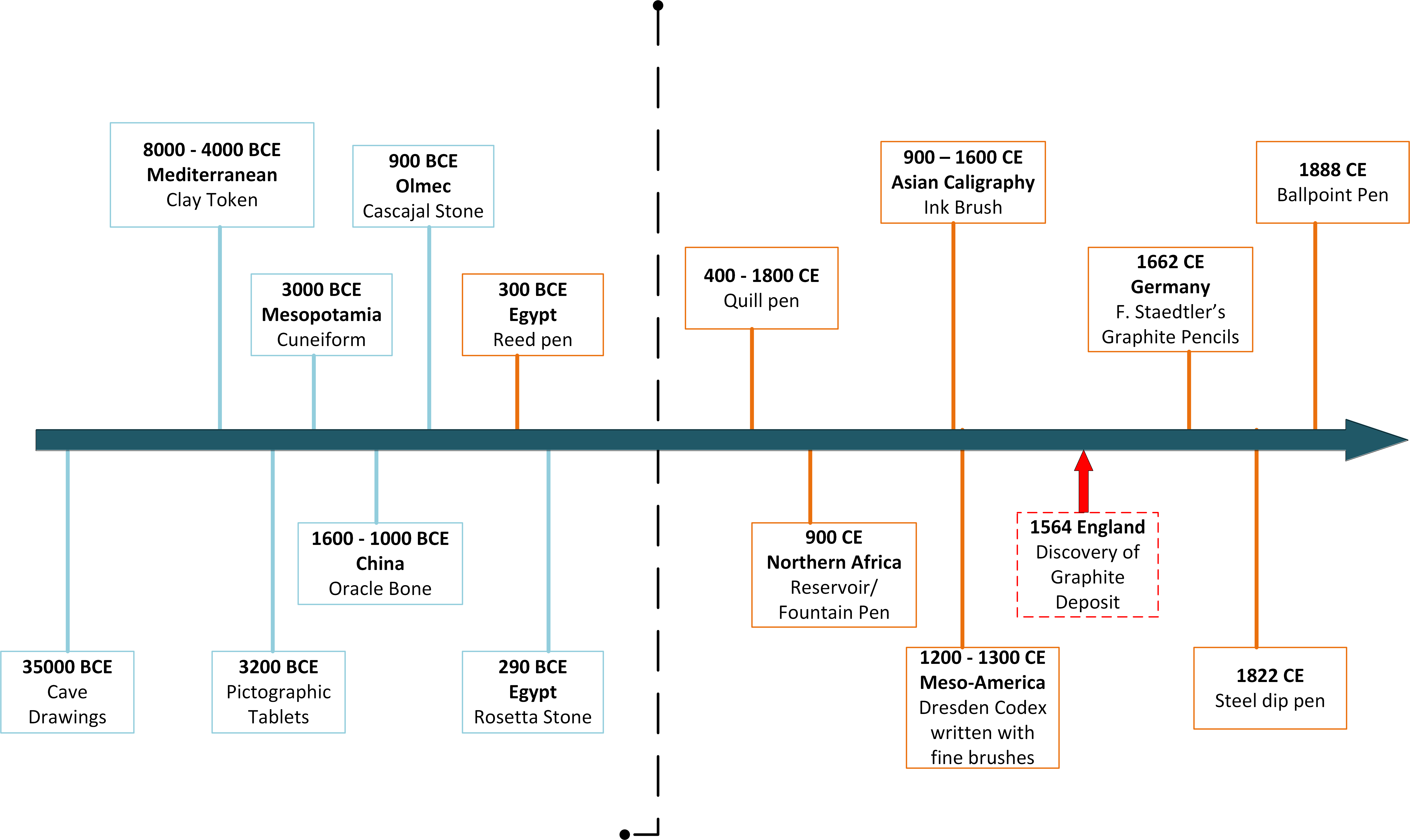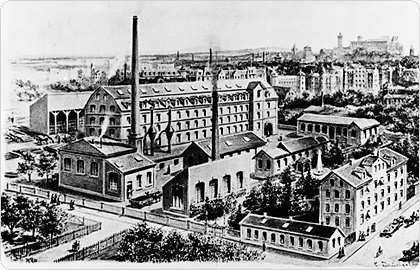Course:HIST104/Staedtler
| Staedtler Pencil | |
|---|---|
[[ | |
| HIST 104 | |
| Section: | |
| Instructor: | DIXON,JOY |
| Email: | |
| Office: | |
| Office Hours: | |
| Class Schedule: | |
| Classroom: | |
| Important Course Pages | |
| Syllabus | |
| Lecture Notes | |
| Assignments | |
| Course Discussion | |
Introduction
The pencil, a writing instrument was first developed when the Egyptians thought to dip their pigments into papyrus reeds as a tool to write language. From the Papyrus reed writing utensils, feather quills were invented and were used with ink for hundreds of years, perfected as writing became popular.
The first wood encased pencils appeared in the 16th century in England, but soon after due to German miners travelling to England, wood encased pencils were made in Nuremburg, Germany; a trading hub throughout Europe and into Asia. It is also the birth place of the Staedtler pencil, which was originally produced by one artisan: Freidrich Staedler. As the world industrialized and colonized, wooden pencils grew in popularity and new manufacturing techniques developed. The small artisan company Staedlter procured pencil making machines, that mass produce the pencils to be used worldwide. The Staedler pencil is important representation of cultures in contact as the Staedler family has facilitated the manufacturing and trade of this writing utensil for centuries as a tradable good.[1]
Portrait of a Staedtler Pencil
As with any cultural artifact, it is crucial to examine the origins of the pencil and exactly how it came to be constructed in the first place. Freidrich Staedtler was the founding father of Staedtler pencils, and his ties to pencil production in the city of Nuremburg can be traced back to 1662.[2]
The construction of the first Staedtler pencils would not have been possible without the connections that existing between the diverse geographic regions of Europe. The first discovery of the “lead” that would become the interior of the pencil took place far away from Staedtler’s hometown of Nuremburg; this “lead” was discovered in 1564 in Borrowdale, England. Contrary to popular belief, the interior of the pencil is not made of lead, nor has it ever been. The 1564 discovery was in fact a large deposit of graphite. Unable to correctly identify the ore, since chemistry was still a developing discipline, this graphite was called “plumbago”, meaning “lead ore” due to its lead-like appearance.[2]
The value of graphite was not only in its capacity in pencils: graphite was a highly prized substance because it was used in the creation of cannonballs. Graphite had to be smuggled out of England in order for pencils to be produced. The specific details of this are more ambiguous, although there are many possible reasons why pencil production was of lower priority to the English crown, which held a monopoly over graphite production. Yet one way or another, enough graphite sticks were exported to be devoted to the production of pencils.[2]
Pencil interiors are not composed exclusively of graphite, however. The first attempt to make the interior of pencils from graphite powder was realised in Nuremburg in 1662. They were formed of a composite including powdered graphite, sulphur, and antimony, and represented just one step in the assembly of pencils.[2] The notion of encasing the pencil lead in wood was an idea that originated in Italy, yet another example of ideas and cultural practices being exchanged across time and space. This innovation was serendipitous, as it seemed to a be common theme amongst cultures to loathe the grey dust that was left behind on a craftsman's paper and hands.
Moreover, Freidrich Staedtler innovated the pencil manufacturing industry by combining two previous separate occupations into one streamlined process. Traditionally, someone was responsible for cutting the graphite into usable portions, while another was responsible for the further processing of the pencil as a manufactured product. During the days of Freidrich Staedtler, this tradition was law: the Nuremburg Council had instituted a law proclaiming that the manufacture of pencils be done by two different specialists. Staedtler's innovative manufacturing technique revolutionised the production of pencils, and was an early attempt to streamline production of tradable goods in order to increase productive efficiency.
Thus the Staedtler pencil was born: novel methods, materials, and innovators came from all over Europe to create the Staedtler pencil.
History of Writing
After the discovery of black lead in 1564 in Borrowdale, England, it quickly replaced lead as the primary material used to write due to its darker tone.[3] Logically, black lead was eventually renamed to "graphite" by a German chemist, A.G. Werner after the Greek word graphein, which means "to write."[4] Staedtler took advantage of this feature of graphite to create a tool that is still widely used today to write. However, the verb "write" is more widely defined by the Oxford English Dictionary as[5]:
"to form (letters, symbols, words, etc.) by carving, engraving, or incision; to trace in or on a hard or plastic surface, esp. with a sharp instrument; to record in this way."
Therefore, this section will explore the various tools and instruments that were used throughout history to document anything and everything that needed to be recorded.
The act of writing (in its general sense) dates back 37000 years in the form of cave drawings. Since then, many cultures / civilizations / countries have developed their own method of writing. The events denoted in blue are typically characterized by carvings or incisions into solid slabs, whereas the orange events denote specific writing utensils that were used throughout history.
Early Production and of the Staedler Pencil
Friedrich Staedler carried out the entire pencil-making process by himself, combining the two professions of lead cutting and carpentry. He was the first craftsman in Nuremberg to do so against the will of Nuremberg Council, shaping the landscape of the future pencil-making industry.[9] While Friedrich was the premier pencil craftsman, J.S. Staedtler was the one who decided to ship pencils out of the country, with the intention of inspiring people and cultures all over the world.
To further spread his products to other cultures, J.S. Staedtler was also part of the 1835 World Exhibition held in New York[10], which was an international fair meant to showcase manufactured products as well as feautures of other cultures from other parts of the world.
The Staedtler Pencil Then & Now
Fredrick Staedtler's hand crafted pencils can be traced back to Nuremberg in 1662, and his family continued his legacy, with help from industrialization and a market looking for a writing implement with pigment that did not easily smudge like pen ink. In 1835, Johann Sebastian Staedtler opened a pencil making factory, which was one of the first pencil making factories in Europe, and by 1866, Staedler pencils were sold in Austria, France, England, Italy, Russia, America, and India.[6]
Since then, the company has grown into a well-known entity, boasting 6 manufacturing plants, including three in Germany. It also has 23 foreign sales subsidiaries, and is represented in 150 countries. Besides the classic wood model pencils, with eraser or without, Staedlter pencils also now come in mechanical varieties, and the company also sells, markers, erasers, pens, and modelling clay. Today, more than 80% of all of Staedter's products are manufactured in Germany. According to Staedtler's website, "this makes STAEDTLER, with its three production plants in the Nuremberg metropolitan region, the largest European manufacturer of graphite pencils..." [7] It strives to only use eco-friendly manufacturing processes, using natural materials, recycling, reduction of carbon dioxide emissions and certified wood for its entire range of ‘Made in Germany’ wood-cased pencils, in accordance with valid FSC and PEFC standards. Staedtler has won awards for their innovative designs including: Medals of honor to Johann Sebastian Staedlter in Nuremburg London and Paris, The Red Dot Design Award in 2009, The Design Plus Award in 2009, The iF Material Award in 2010
References
1. "History of Writing Implements - Tools for Writing." History of Writing Implements. N.p., n.d. Web. 08 Aug. 2016. 2. "Pencil History - Pencils.com." Pencilscom RSS2. N.p., n.d. Web. 08 Aug. 2016.
3. "Graphite." Earth Sciences Museum. N.p., 2013. Web. 08 Aug. 2016.
4. "write, v." OED Online. Oxford University Press, June 2016. Web. 8 August 2016.
5. Baron, Dennis. A History of Writing. Urbana-Champaign: University of Illinois, 2009. PPT.
6. Joseph, Ugesh A.. The 'Made in Germany' Champion Brands : Nation Branding, Innovation and World Export Leadership. Farnham, GB: Routledge, 2013. ProQuest ebrary. Web. 7 August 2016.
7. "Design Awards." World's Best Art & Writing Supplies. N.p., n.d. Web. 08 Aug. 2016.
8. "Ideas from STAEDTLER® Go around the World!" Ideas Go around the World. N.p., n.d. Web. 08 Aug. 2016.
9. "The pencil - heart of the company" Staedtler. N.p., n.d. Web. 08 Aug. 2016
10. "STAEDTLER® journey round the world at a glance" Ideas Go around the World. N.p., n.d. Web. 08 Aug. 2016.
Pictures Cited
1. Tradition. Digital image. Http://www.lehrer.staedtler.at/lehrer_geschichte_at?ActiveID=107678. N.p., n.d. Web. 8 Aug. 2016.
2. Graphite. Digital image. Https://www.staedtler.ca/en/company/tradition-and-innovation/the-pencil/. N.p., n.d. Web
3. Nurumberg . Digital image. Http://www.lehrer.staedtler.at/lehrer_geschichte_at?ActiveID=107678 . N.p., n.d. Web. 8 Aug. 2016.
4. McNeven, J. The Foreign Department, Viewed towards the Transept. Digital image. Vam.ac.uk . N.p., n.d. Web. 04 Aug. 2016.




